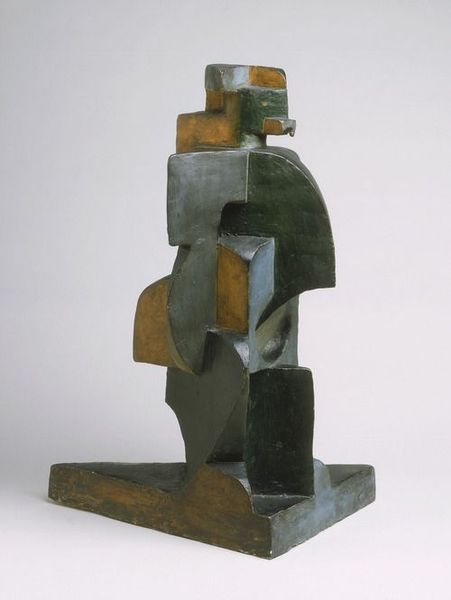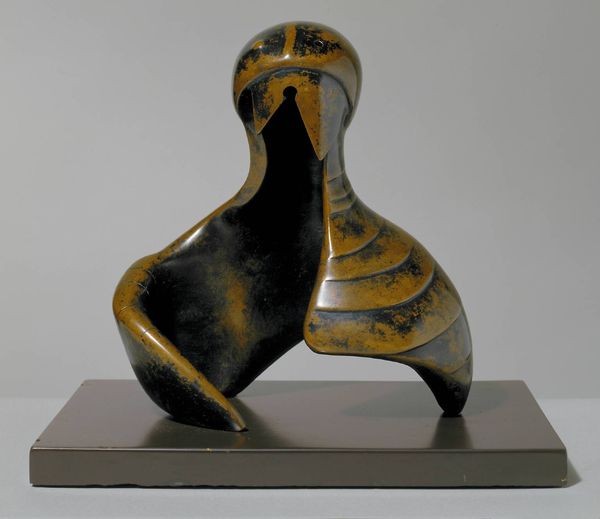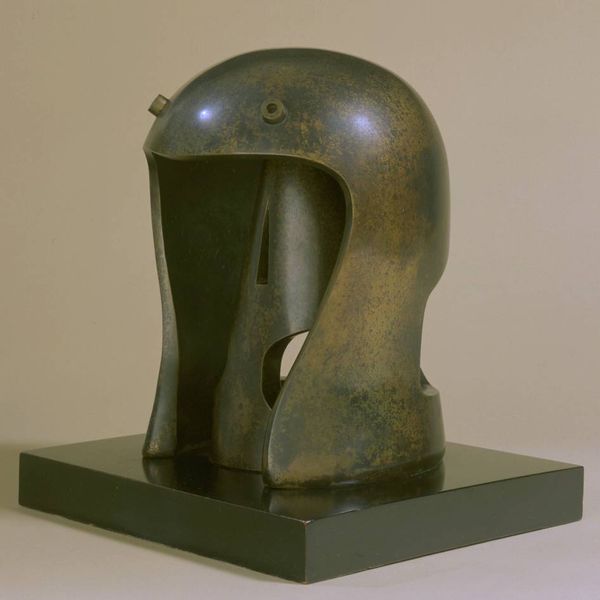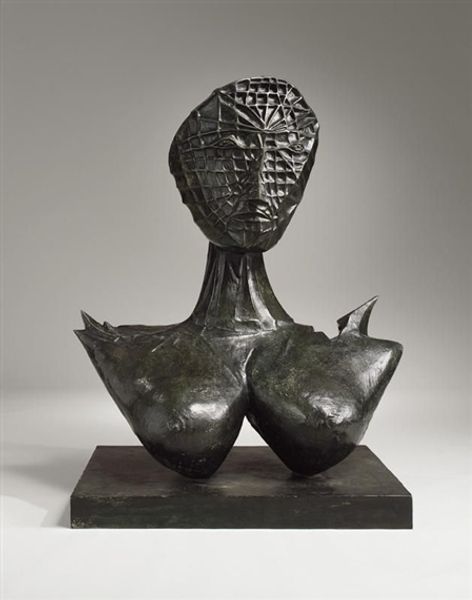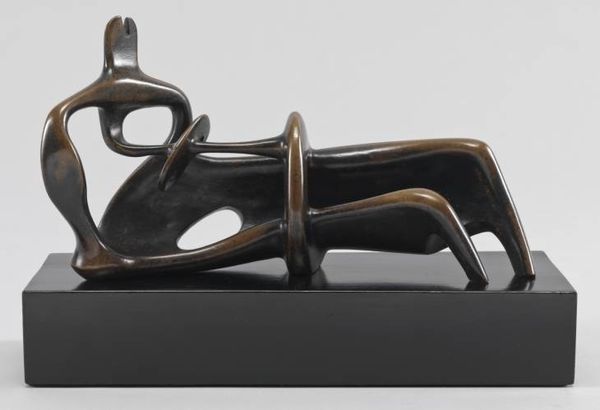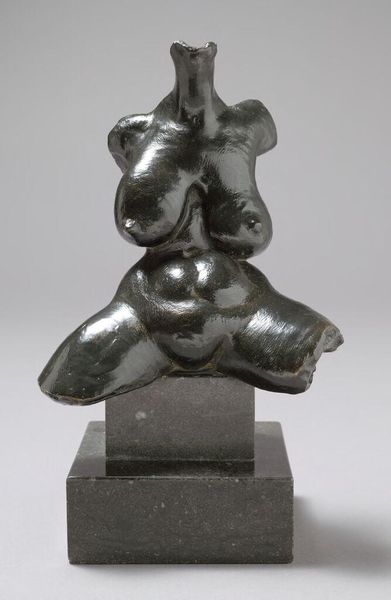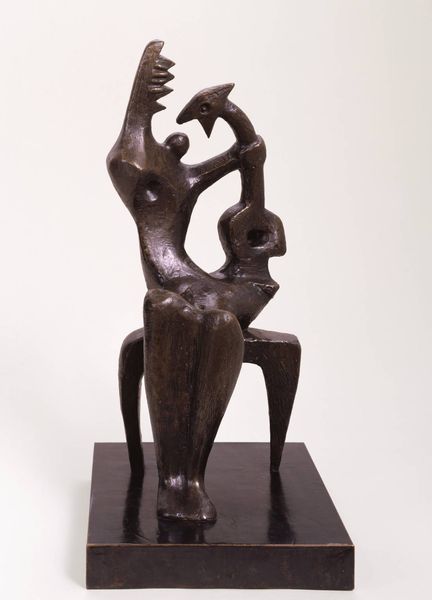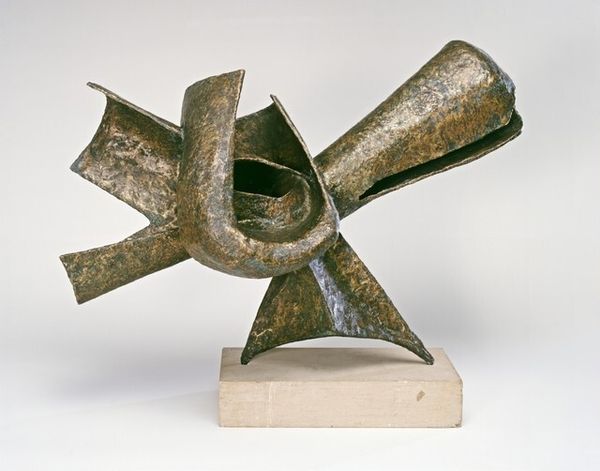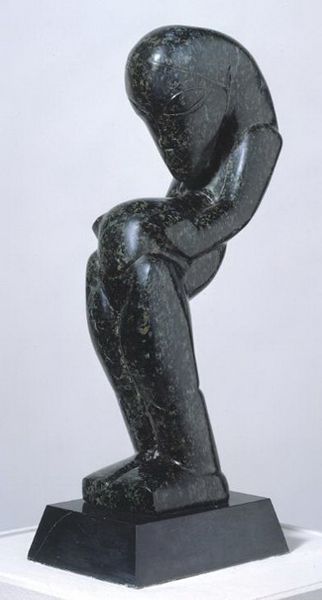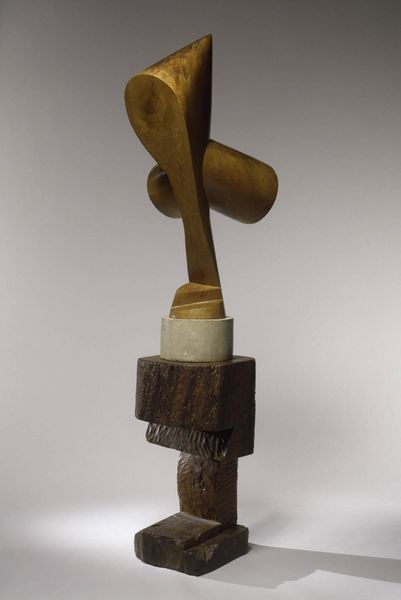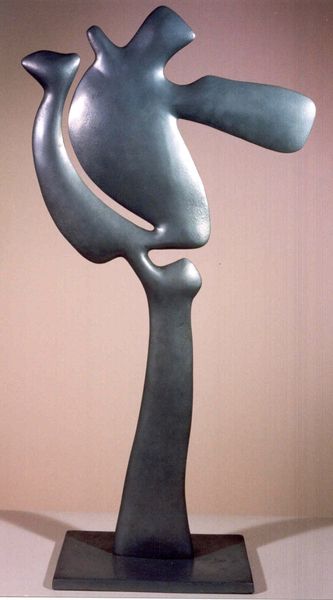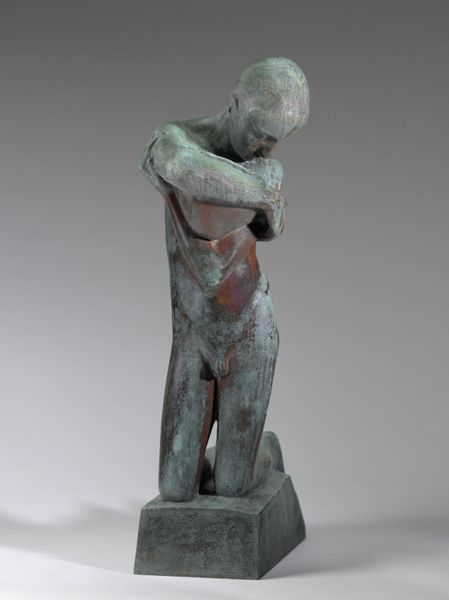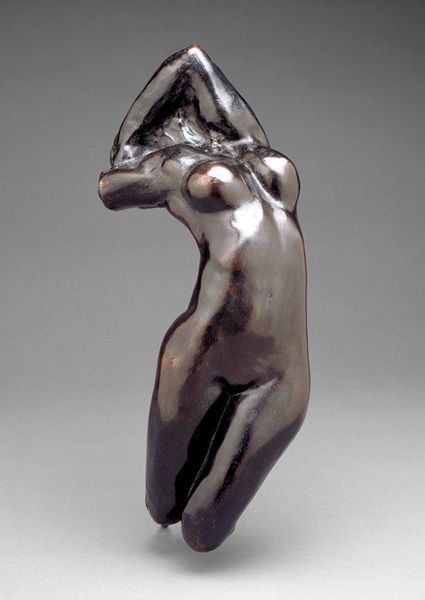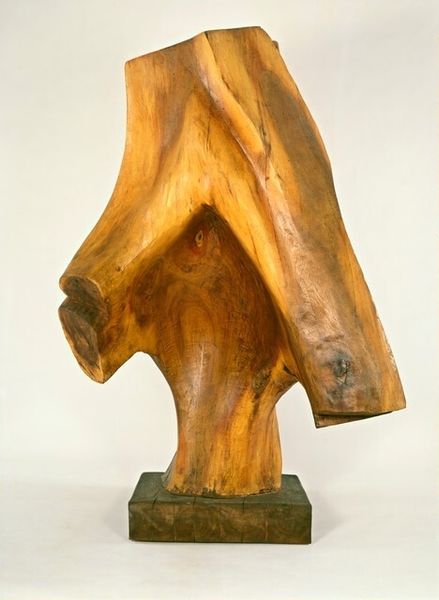
carving, bronze, sculpture
#
cubism
#
carving
#
sculpture
#
bronze
#
figuration
#
geometric
#
sculpture
#
abstraction
#
modernism
Dimensions: 62.23 x 38.1 cm
Copyright: Public domain US
Editor: This is Olexandr Archipenko’s bronze sculpture, "The Boxers," created in 1914. The figures are abstracted almost to geometric forms. I'm struck by how the smooth, almost aerodynamic shapes suggest both strength and a kind of frozen tension. What do you see in this piece from a formal perspective? Curator: The power of "The Boxers" resides in Archipenko's masterful manipulation of form. Observe the interplay of positive and negative space: the solid masses of the figures are just as important as the voids carved out between them. The artist’s decision to reduce the human form to intersecting planes and simplified volumes generates a dynamic rhythm and an impression of pent-up energy. Do you notice how the lines of force converge, suggesting the moment just before impact? Editor: I do see that. The angularity creates a sense of impending action, even though it's a static sculpture. But beyond just creating tension, how does the abstraction contribute to our understanding? Curator: Abstraction allows Archipenko to distill the essence of boxing—not just a physical fight, but also a contest of wills, a struggle reduced to its purest geometric expression. It pushes us away from literal representation to understanding the deeper ideas embedded in the subject matter, what boxing *represents*. Notice how this strategic interplay captures something about the contest itself rather than providing a clear rendering of an event. Editor: That's insightful! I had been so focused on the shapes that I overlooked that this treatment helps us consider the fight on a conceptual level. I really appreciate your insights. Curator: It's through examining the formal components that we unveil the broader narrative embedded within the art object. It really shows the impact of Cubism.
Comments
No comments
Be the first to comment and join the conversation on the ultimate creative platform.
